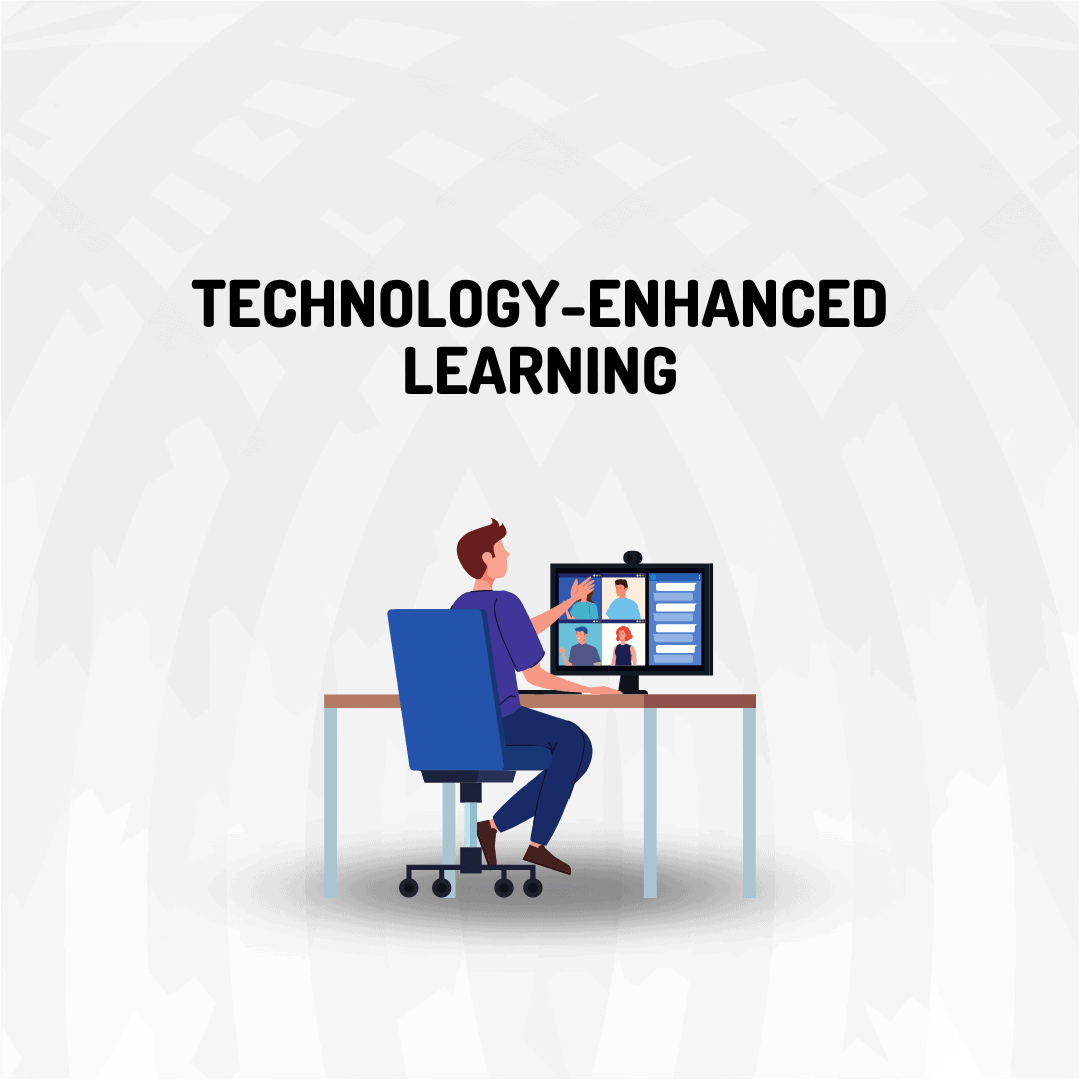Technology-Enhanced Learning: A Quick Guide
|
Getting your Trinity Audio player ready...
|
Introduction
In recent years, Technology Enhanced Learning (TEL) has become a popular way to revolutionize the classroom with modern digital tools and strategies. With TEL, educators and pupils now have access to an array of new chances that not only upgrade the traditional learning environment but also make it more engaging. This guide will dive into all aspects of TEL—from its advantages to types and practical strategies for implementation.
The Benefits of Technology-Enhanced Learning
2.1 Improved Accessibility
Thanks to modern technology, education has become more accessible than ever before. Today, students from all walks of life can access learning materials and courses online regardless of geography or financial standing – leading to educational democratization as well as a richer diversity in the learning environment.
2.2 Personalized Learning
With TEL, students can individualize their learning journey by setting their own pace and paths while accessing resources that are personalized to suit them. Compared with conventional teaching methods of the one-size-fits-all variety, this brings about greater efficacy as each learner is catered to by his or her preferences and proficiencies.
2.3 Increased Engagement
Incorporating digital tools and multimedia elements, such as interactive simulations, videos, and games into the learning process can be a highly effective way to engage students enjoyably. Not only will this approach capture their interest but it can also motivate them to actively participate in their educational journey.
2.4 Real-time Feedback and Assessment
TEL platforms provide immediate feedback and assessment, giving students the ability to track their growth and pinpoint areas needing further development. With this instantaneous response, students are kept engaged and encouraged along the way for continued improvement.
2.5 Collaborative Learning
Thanks to modern technology, the learning experience has been completely revolutionized. Students are now able to more easily come together and share ideas both in and out of class with online discussion boards, social media sites, Google Docs, and other collaborative tools – all helping cultivate beneficial teamwork skills as well as communication capabilities.
Types of Technology-Enhanced Learning
3.1 Online Learning
Online education, or e-learning, revolutionizes the way students access educational material. Video lectures and virtual classrooms enable pupils to learn at their own pace from any location around the globe! This form of learning gives learners boundless resources where they can make tremendous strides towards achieving success.
3.2 Blended Learning
By blending in-person instruction with online learning, blended learning allows teachers to take advantage of the most beneficial elements from both traditional and virtual classrooms. This provides learners with an unparalleled experience that is more dynamic and accommodating than ever before.
3.3 Mobile Learning
M-learning, short for mobile learning, allows students to make use of mobile devices like phones and tablets as a platform on which they can access educational material while out and about. This is extremely beneficial to those who need the flexibility that comes with studying anytime or anywhere there’s an internet connection.
3.4 Gamification
Learning can be both satisfying and stimulating when elements of gaming, such as point systems, leaderboards, and badges are incorporated into the educational process—this concept is known as Gamification. Not only does this technique stimulate students to become more engaged in their studies, but it also makes learning a fun experience!
3.5 Flipped Classroom
By reversing the traditional teaching approach, flipped classrooms provide an innovative way for teachers to focus on each student’s individual needs and have more meaningful interactions in class. In this model, students watch video lectures or read materials at home and then engage in discussions, problem-solving activities and other tasks during their time together with the teacher.
Implementing Technology-Enhanced Learning
4.1 Assessing Needs and Goals
Before installing TEL, educators should evaluate the necessities of their scholars, their instructional ambitions, and what resources are available. Doing so will support them in deciding on the most befitting TEL techniques and tools.
4.2 Choosing the Right Tools
Choosing technology-based learning tools that are in line with your objectives and strategies is an essential step. Some of the most prevalent TEL alternatives encompass Learning Management Systems, content development applications, as well as Google Workspace for Education collaboration software.
4.3 Designing the Learning
When designing a learning experience, it is important to consider the following:
Curriculum Alignment: Ensure that your TEL tools and activities coincide with curriculum objectives.
Engagement: Incorporate interactive elements and media for an enjoyable yet stimulating educational atmosphere.
Flexibility: Give access to a variety of resources so learners can pursue their goals at their own pace.
Collaboration: Create collaborative projects plus online forums that promote communication between peers in pursuit of common objectives
4.4 Training and Support
To ensure educators and students are best equipped to take advantage of TEL tools and platforms, it is essential to provide both parties with the necessary training, support, professional development opportunities, tutorials and help guides. Educators must be given access to enhance their technological capabilities as well as stay up-to-date on optimum practices while pupils should have requisite resources available for assistance when needed.
4.5 Evaluation and Improvement
To ensure that your TEL initiatives are successful, frequently assess student feedback, assessments and analytics. Follow up by utilizing this analysis to pinpoint areas for improvement and modify the learning experience accordingly to get the best results possible.
Challenges and Solutions in Technology-Enhanced Learning
5.1 Digital Divide
The digital divide is a concerning issue contrasting those who can take advantage of technology and the education it provides with those deprived of such opportunities. To combat this, educational institutions and governments must invest in technological infrastructure as well as provide students from less privileged backgrounds access to affordable internet services and devices.
5.2 Online Safety and Privacy
Educators have the responsibility to ensure online security and privacy by introducing secure platforms, instructing students on digital citizenship, and setting out rules for online behaviour.
5.3 Ensuring Quality
To ensure the quality of TEL, educators should:
- Select high-quality digital resources and tools.
- Continuously update their skills and knowledge of TEL best practices.
- Design engaging and effective learning experiences that align with curriculum standards.
5.4 Resistance to Change
For those educators and students who may be hesitant to embrace Technology Enhanced Learning (TEL), the best way to conquer this resistance is through offering training, displaying the advantages of TEL, and motivating a culture that encourages innovation and growth.
Conclusion
Unlocking the power of Technology Enhanced Learning has the potential to revolutionize how we learn by making education more accessible, immersive and catered to each individual. To realize these benefits, educators must understand TEL’s various types and implementation strategies. Still, we must recognize any associated challenges to ensure our initiatives are successful. With constant evaluation and improvement efforts along with an understanding of TEL’s capabilities, teachers can truly maximize its use for a better teaching and learning experience!







